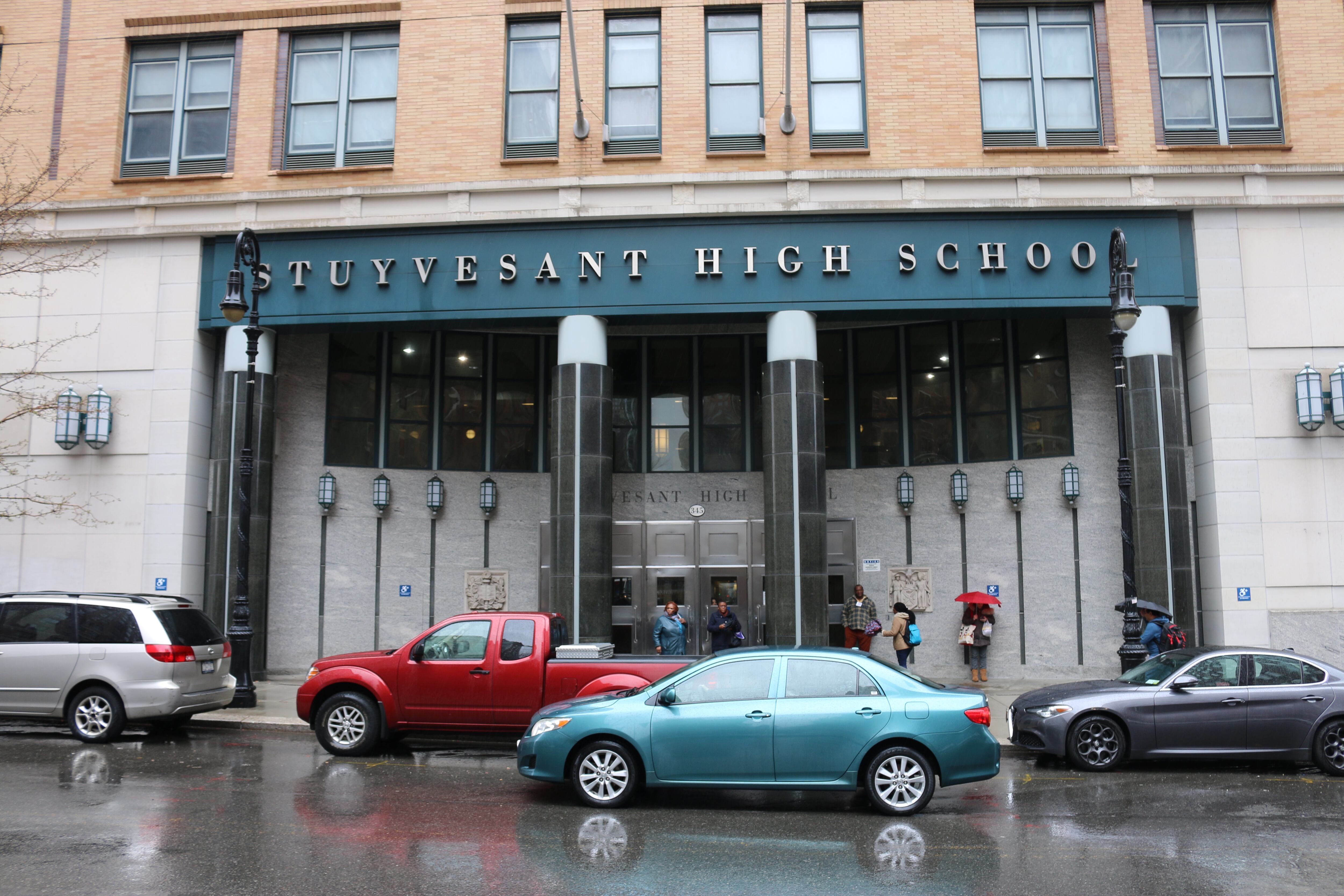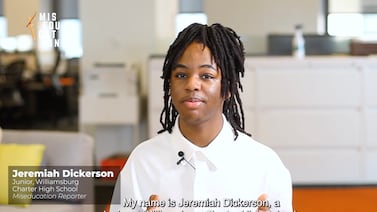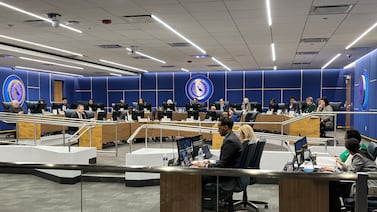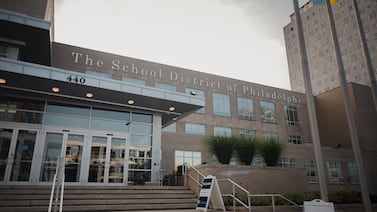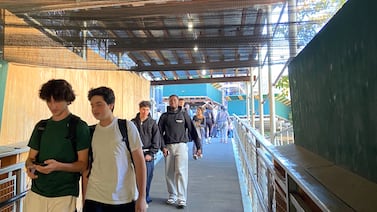Sign up for Chalkbeat New York’s free daily newsletter to keep up with NYC’s public schools.
Capping enrollment at high-demand schools. Merging schools located in the same buildings. Moving some 3-K and prekindergarten programs out of K-12 schools. Paying extra to bring more teachers to hard-to-staff schools.
Those are some of the steps New York City may have to consider in the coming years to comply with a new state law requiring schools to shrink class sizes for hundreds of thousands of students, according to preliminary recommendations from an Education Department working group.
The recommendations, unveiled at a public hearing Tuesday night, are in the early stages and haven’t been adopted by the Education Department. The group is set to deliver its final recommendations Oct. 31. But the initial recommendations give the most detailed look yet of some of the complicated tradeoffs and challenges ahead as the city attempts to shrink class sizes across hundreds of schools in accordance with the state legislation.
Under the law, K-3 classes must have fewer than 20 students, 4-8 classes must be under 23, and high school classes can have no more than 25 students. The caps will phase in gradually over the next five years before fully taking effect.
Currently, more than half of the classes across the city’s 1,600 public schools are out of compliance — over 73,000 classes, according to the 48-member working group, which includes parents, teachers, administrators, union representatives, advocates, and education department officials. Bringing all of those classes under the legal limits will likely require creating thousands of new classes –- and a multi-pronged effort that involves shifting enrollment policies, moving around existing programming to maximize physical space, significantly boosting teacher hiring, and building some new facilities, according to the recommendations.
The recommendations didn’t come with a specific price tag, but included a suggestion that the city should “aggressively pursue new opportunities for potential funding” to cover the costs of implementation.
Previous estimates from the Independent Budget Office have put the cost of the additional staffing alone at between $1.6 billion and $1.9 billion a year.
“We tried to take on a challenging and vexing problem of, ‘How are we going to do this,’” said Patrick Sprinkle, a history teacher at the Lab School for Collaborative Studies in Manhattan and chair of the working group’s staffing sub-committee.
Deborah Alexander, a Queens parent and working group member, added, “we were really focused on … how to use our diverse perspectives to guide the [Education Department] in ways we are hopeful… will not have too many costs along with the benefit of smaller class sizes.”
Since its passage last year, the law has drawn fervent praise from many educators, union officials, and parents, along with criticism from city officials, and some parent groups and experts.
Research has consistently shown that lowering class sizes can increase student achievement, and lowering class sizes is a major priority for educators and many parents.
Mark Henderson, an English teacher at Stuyvesant High School in Manhattan, often has classes of 34 students, which is the limit outlined in the teachers union’s contract. Bringing the number down to 25 would mean “the classes, the teaching, every element of the school experience would be better,” he said.
But city officials contend that the state hasn’t provided sufficient resources to meet the new mandate, and that it will require shifting resources away from other critical programs. Several analyses, moreover, suggest that the highest-poverty schools will benefit less from the law because they are already more likely to have classes under the legal cap.
Working group eyes enrollment changes
One method the city can use to control class sizes is shifting its enrollment policies. The working group acknowledges that the Education Department will likely have to “limit enrollment at overcrowded schools that do not have the space to comply with the new class size caps.”
Working group co-chair Johanna Garcia, the chief of staff for state Sen. Robert Jackson, explained that many oversubscribed schools sit right next to under-enrolled ones. Spreading out enrollment across nearby schools “could lead to benefits at both sets of schools, creating more space for smaller classes and less chaos at the overcrowded schools” while saving the city the cost of building new facilities.
Many of the city’s most oversubscribed schools are among its most popular, and multiple parents voiced vehement objections in Tuesday’s public forum to any efforts to cap or reduce enrollment at overcrowded schools.
“For high schools, in particular, cutting seats” at the most in-demand schools “would have a devastating, cascading impact” resulting in fewer students getting their top choice schools, said Shane Harrison, a parent of a seventh grader.
There is a provision in the law that would temporarily exempt schools from the class size requirements when a lack of space, overenrollment, a shortage of teachers, or “severe economic distress” make it impossible to comply, but the law offers no specifics about the thresholds for qualifying for an exemption.
Parent Leaders for Accelerated Curriculum and Education, or PLACE, a parent advocacy group that supports selective schools and programs, has called for legislators to amend the law to exempt “high-performing” schools and programs from the class size law.
But Tom Sheppard, a Bronx parent and member of the Panel for Educational Policy who also served on the working group, countered that offering a blanket exemption to high-performing schools would “allow schools that people ‘want to go to’ to stay bursting at the seams while schools where you have issues with enrollment, it perpetuates that.”
The working group also recommends instituting multiple shifts at overcrowded schools — so that not all students would be in the school building at the same time — as a temporary stopgap in place of capping enrollments. Some of the city’s large high schools already have multiple overlapping shifts of students.
Some schools will need more space and teachers
The working group suggests shifting school programming in order to maximize all available space to create additional classes. That could involve moving 3-K and pre-K programs out of district school buildings to free up space and merging separate schools co-located in the same buildings to streamline operations, according to the recommendations.
Garcia said relocating pre-K classes from district schools to community-based organizations with “thousands of unfilled seats” in their city-funded pre-K programs could open space in elementary schools without sacrificing quality of the preschool programs.
But Martina Meijer, a Brooklyn public school teacher, raised a concern that such a move would make staffers from those programs ineligible to be members of the United Federation of Teachers.
The group cautioned that spaces for physical education, art, or elective classes shouldn’t be taken over to create more space for core classes.
Opening new facilities should be a last resort — and in cases where the city does need additional school space, it should prioritize leasing existing buildings like shuttered parochial and charter schools, rather than building new schools, according to the preliminary recommendations.
The city’s School Construction Authority recently estimated that between 400 and 500 schools will need additional space in order to comply with the class size law. An estimated 40% of those schools — between 160 and 200 — would likely need entirely new facilities, according to the estimates.
Finding enough physical space, however, is only one part of the equation. The city will also need enough teachers to staff newly opened classes. Education Department officials have estimated that the city’s teaching force, currently at around 76,000, will need to grow by 9,000 by the time the law takes full effect.
Suggestions for boosting teacher hiring include easing the process for paraprofessionals and teacher aides to earn their teacher license and offering pay incentives for teachers who work in hard-to-staff schools and subject areas — an idea the city has experimented with before.
Michael Elsen-Rooney is a reporter for Chalkbeat New York, covering NYC public schools. Contact Michael at melsen-rooney@chalkbeat.org.

